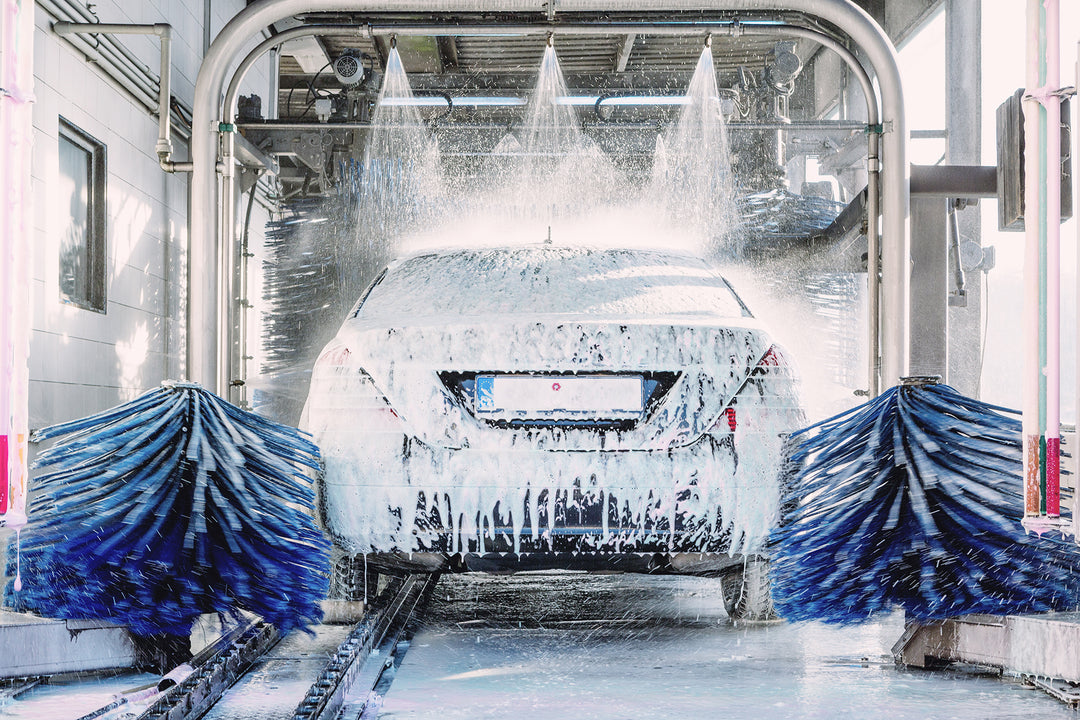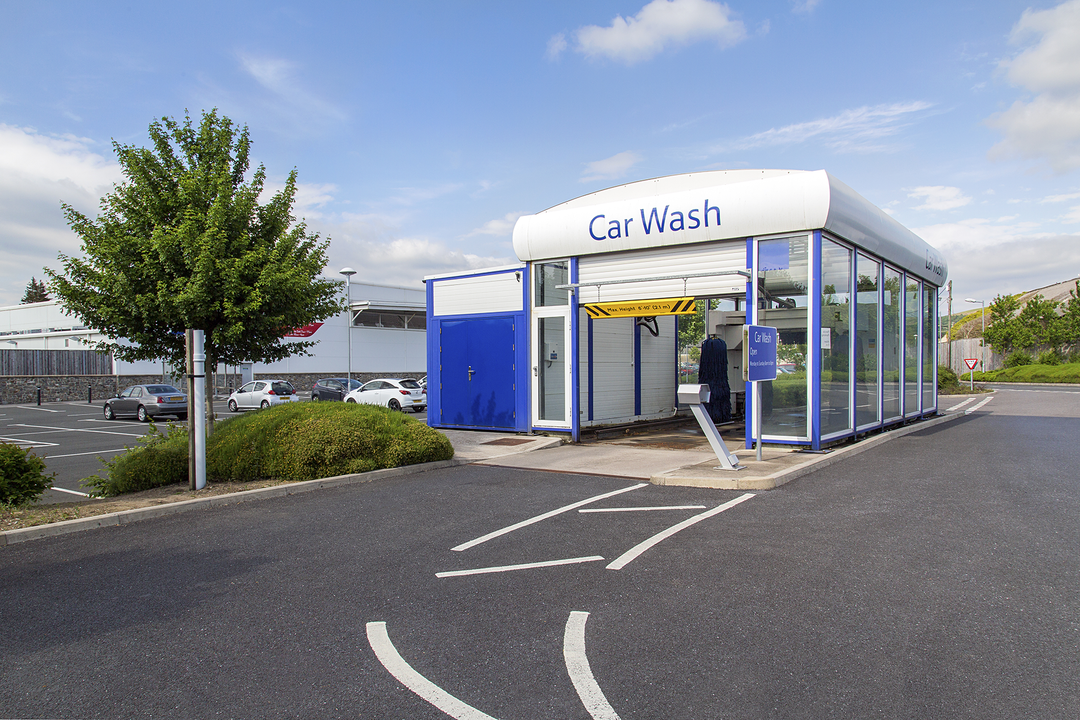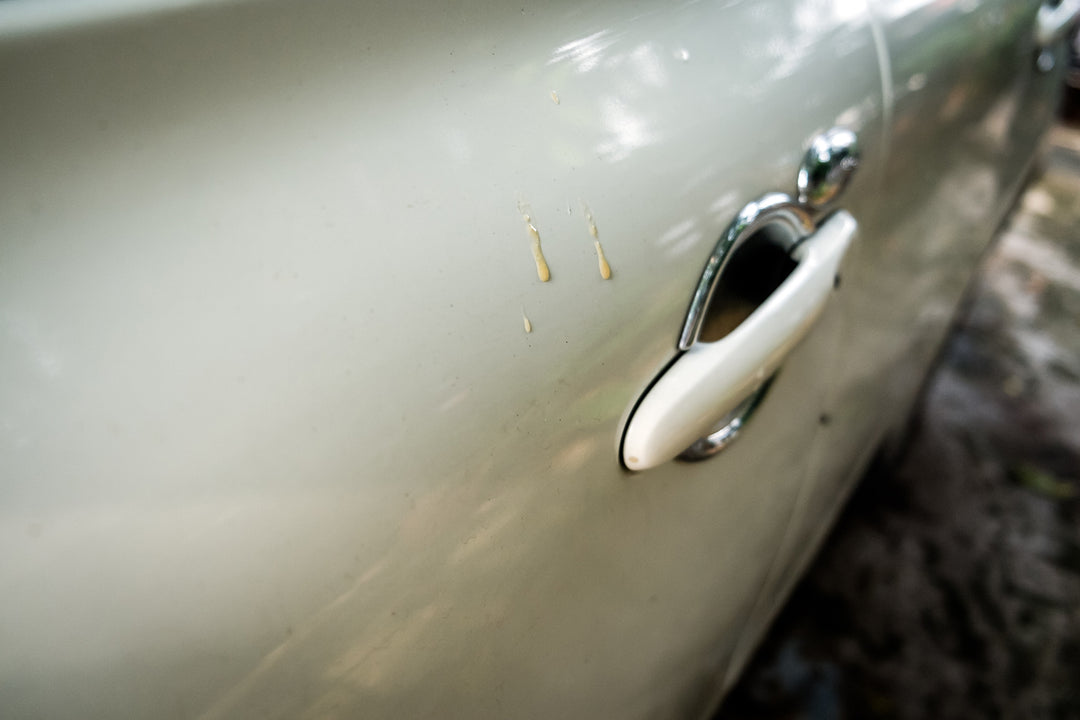Master Exterior Car Detailing in 5 Steps
- Posted on:

Taking care of your car's exterior will help maintain its aesthetic appeal and preserve its value over time. Mastering exterior car detailing is a comprehensive approach to cleaning, restoring, and protecting every aspect of your vehicle's exterior.
By following a systematic process, you can achieve a professional-level finish that will leave your car looking its best. This guide will explore the five key steps in main exterior car detailing, providing you with the knowledge and techniques to transform your vehicle's appearance.
Step 1: Collect The Tools Needed

Before you begin the exterior car detailing process, gathering all the necessary tools and supplies is essential. The correct tools will make it easy to do the job and ensure you achieve the best results. Here's a detailed list of the tools and supplies you will need:
Microfiber Wash Mitts
These soft and absorbent mitts are perfect for gently washing your car's exterior. They help to prevent scratches and swirl marks on the paint surface. You can also use a mesh bug sponge to clean grime and dirt from your windshield.
Car Wash Soap
Choose a high-quality, pH-balanced car washing shampoo for automotive use. Avoid using dish soap or household cleaners, as they are likely to destroy the protective wax on the car.
Buckets
You'll need two buckets—one for soapy water and another for rinsing. This two-bucket method helps to prevent dirt and debris from contaminating the wash mitt and reduces the risk of scratching your car's paint.
Wheel Cleaner
Invest in a good wheel cleaner that can eliminate grime, brake dust, and dirt from your wheels. Different types of wheels may require other wheel cleaners, so choose the appropriate one for your specific wheels.
Soft-Bristle Brush
A soft-bristle brush helps clean the intricate details of your wheels, such as the spokes and lug nuts. The brush you choose should have gentle bristles so it doesn’t scratch the surface of your wheels.
Microfiber Towels
Stock up on high-quality microfiber towels for various detailing tasks. These towels are excellent for drying your car's exterior, removing wax or polish residue, and cleaning glass surfaces without leaving lint or streaks.
Clay Bar
A clay bar is essential for removing contaminants from your car's paint surface, such as tree sap, industrial fallout, and overspray. In addition, it will create a clean and smooth surface for polishing and waxing.
Car Polish
Invest in a good car polish or car wax to restore the shine and remove light any swirls or scratch marks on your car's paint. Look for a polish compatible with your car's paint type and color. This will also help maintain the car's finish.
Wax or Paint Sealant
Choose a high-quality wax or paint sealant to give your vehicle a lasting shine and protect the car paint. Wax provides a traditional glossy finish, while paint sealants offer enhanced durability and protection. You can find these products at an auto detailing business near you.
Applicator Pads
These pads apply polish, wax, or sealant to your car's exterior. Look for foam or microfiber applicator pads that are soft and gentle on the paint surface.
Tire Dressing
To enhance the appearance of your tires, invest in good tire dressing. Choose a non-greasy formula that provides a deep, rich shine while protecting the rubber from cracking and fading.
Detailing Brushes
Have a set of detailing brushes in different sizes to clean hard-to-reach areas, such as air vents, grilles, and crevices. These brushes help to remove dust and dirt from intricate areas without causing damage.
Glass Cleaner
Use a streak-free glass cleaner to clean your car's windows and mirrors. Look for a cleanser that keeps residue and streaks from behind for optimal visibility.
Plastic Trim Restorer
If your car has plastic trim or moldings, invest in a plastic trim restorer to rejuvenate and protect them from fading and oxidation.
Pressure Washer (Optional)
While not necessary, a pressure washer can help remove stubborn dirt and grime from your car's exterior. Use it with caution and at a safe distance to avoid damaging the paint.
By gathering these tools and supplies, you'll be fully equipped to tackle the exterior car detailing process. The right equipment ensures you can achieve professional-level results and maintain your vehicle's pristine appearance.
Step 2: Thoroughly Clean Your Car's Exterior

Keeping your car's exterior clean is essential for maintaining its overall appearance and protecting the paintwork. In this step, we will thoroughly clean your car's exterior to ensure it is free from dirt, grime, and contaminants.
Pre-wash
Before you begin the primary washing process, it is important to pre-wash your car. Start by rinsing the entire exterior with a gentle stream of water.
This will help remove loose dirt, dust, and debris that may scratch the surface during washing. Be sure to pay attention to areas such as the hood, roof, doors, and trunk, as they accumulate more dirt.
Choose the Right Car Wash Soap
Choosing the suitable car wash soap protects your car's paintwork. Avoid household detergents or dish soaps, as they will likely destroy the sealant and protective wax on your car's surface.
Opt for a pH-balanced soap specifically formulated for automotive use. Follow the manufacturer's instructions for the correct soap-to-water ratio.
Two-Bucket Method
Adopt the two-bucket method to minimize the risk of adding dirt to the paintwork. Start by preparing two buckets; fill one with clean water and another with soapy water.
Dip a sponge or wash the mitt with soapy water and ensure it is fully saturated. Start by cleaning the top of your car, and go down using gentle circular motions. This method prevents cross-contamination, as the mitt can be rinsed in the bucket with clean water before you can reload it with soapy water.
Pay Attention to Detail
Pay close attention to the finer details. Clean all exterior surfaces, including the body panels, windows, mirrors, and door jambs. Take extra care when cleaning intricate areas such as emblems, grille, and crevices. Use a separate sponge or mitt for the wheels and tires, as they accumulate more brake dust and grime.
Step 3 - Rinsing
After washing each section:
- Rinse your car thoroughly with clean water.
- Use a hose with a gentle stream or a pressure washer to a low-pressure setting.
- Ensure all soap residue is removed, which can leave streaks or spots on the paintwork when it dries.
- Rinse the wheels and tires, eliminating any leftover dirt or cleaning agents.
Step 4: Very Important - Drying Process

To prevent water spots, dry your car immediately after washing. Use a clean microfiber drying towel or a chamois to soak up excess water from the surface.
Dry from the top down, working your way to the bottom. Pat dry the paintwork, windows, and other exterior surfaces gently. Avoid using abrasive towels or materials that may cause scratches.
Step 5: Final Touches
Once your car is dry, inspect the exterior for any remaining dirt or smudges. Pay close attention to the windshield, side mirrors, and door handles. Use a detailing spray or quick detailer and a clean microfiber towel to remove stubborn spots or streaks.
Benefits of Exterior Car Detailing

Exterior car detailing goes beyond just keeping your vehicle clean. It offers a range of benefits that contribute to your car's overall maintenance and appearance. Here are some key benefits of regular exterior car detailing:
Enhanced Aesthetics
One of the primary benefits of exterior car detailing is the improved appearance of your vehicle. Through thorough cleaning, polishing, and protection, detailing gives your car the shine and lustre it had when new.
It removes dirt, grime, and imperfections, leaving a smooth, glossy finish that makes your car look brand new.
Protection against the Elements
Your car's exterior surfaces are constantly exposed to various environmental elements, such as UV rays, pollutants, dirt, and moisture. External car detailing includes the application of wax, sealants, and protective coatings that act as a barrier against these elements.
This helps prevent damage to your car's paint, reducing the risk of fading, oxidation, and corrosion.
Preservation of Resale Value
Regular exterior car detailing will preserve your vehicle's resale. A well-maintained exterior creates a positive impression and increases the appeal to potential buyers. Protecting the paintwork and keeping it in top condition can maximize your car's value if you ever wish to sell it.
Prevention of Paint Damage

The car paint can quickly get swirl marks, scratches, and other blemishes caused by improper washing techniques, environmental contaminants, and everyday wear and tear.
Exterior car detailing involves using specialized tools and methods to clean and maintain the paintwork safely. This minimizes the risk of paint damage and ensures that your car maintains its flawless appearance.
Improved Safety

Clean and clear windows, mirrors, and headlights are essential for optimal driving visibility. Exterior car detailing includes thoroughly cleaning these surfaces and removing dirt, grime, and haze that can obstruct your view.
This improves safety on the road, reducing the risk of accidents. Furthermore, it will help maintain the leather seats in top condition.
FAQs
How often should I detail my car's exterior?
Detailing your car's exterior once every year is best to ensure it maintains its appearance and protects the paintwork.
If you live in places with harsh weather conditions or your car is subjected to excessive dirt and grime, more frequent detailing may be required.
Can I use dish soap to wash my car?
No, using dish soap to wash your car is not recommended. Instead, use a pH-balanced car wash soap specifically designed for automotive use.
Is clay barring necessary for every detailing session?
Clay barring helps to remove embedded contaminants and provides a smooth surface for polishing. Clay barring is not required during every detailing session. Clay-locking your car's exterior at least once or twice a year or when you notice rough or contaminated paint surfaces is recommended.
Can I use the same microfiber towel for different tasks?
Using separate microfiber towels for different tasks is best to avoid cross-contamination. For example, use one towel for drying, another for applying polish or wax, and a different one for glass cleaning. This helps prevent dirt or debris from one task from damaging other surfaces.
Can I wax my car without polishing it?
Polishing helps to remove light scratches, oxidation, and other imperfections, allowing the wax to adhere better and provide a more uniform finish. While it is possible to apply wax without polishing, the results may need to be more satisfactory. It's best to polish before applying wax for optimal results.
How long does the exterior detailing process take?
The duration of the exterior car detailing process varies, depending on the level of contamination and other factors. You could spend a few hours of a full day completing the detailing process thoroughly.
Conclusion
Mastering the art of exterior car detailing is a time-intensive process that requires effort. Still, eventually, you shall enjoy the results of a beautiful-looking car that smells brand new.
Keeping a few fundamental rules in mind throughout this process will help ensure success with every detail project.
Always start by thoroughly washing your vehicle and focusing on every area inside and outside your car. Be prepared for any potential debris or dirt accumulation and take the necessary steps to remove it before moving on to polishing and waxing.
Cleaning wheels and tires should always be noticed when detailing your car's exterior.
Lastly, do — and perhaps most importantly - remember that clarity is key; good detailing practices call for more than just smearing product on the paintwork; take the time to see which products are best suited for your specific model and create clear goals for each process step.
Doing so will guarantee a fantastic finish that you'll be proud to show off!





